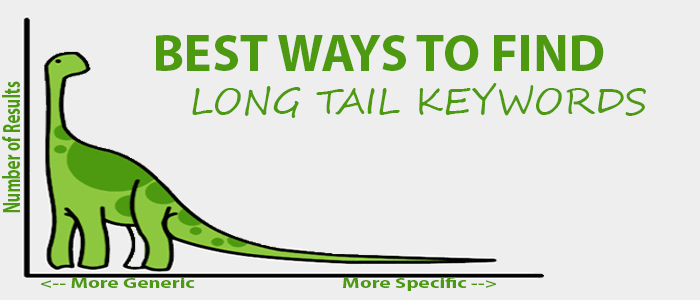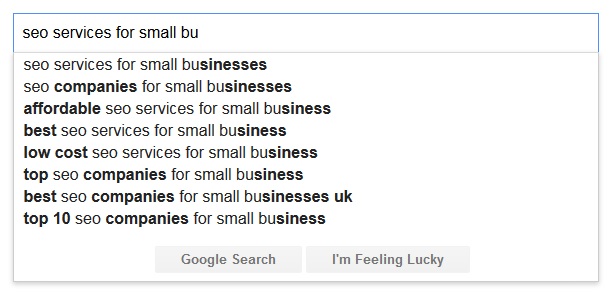Boosting Your SEO- Keywords
Boosting your SEO begins with keywords. As you’re most likely aware, keywords are integral to your digital advertising strategy. If they’re too vague, you’re likely to get lost amongst your competitors, or worse, not show up on the first page at all. And that’s a problem. According to Hubspot, 75% of users never scroll past the first page of search results.
So as we approach the new financial year, it’s a great opportunity to assess how your keywords have been performing, and make necessary changes from there.
Number One: Research, Research, Research.
When it comes to your keywords, methodical research is an absolute must. Try beginning by getting into the mindset of your customer. If a user was to search for you or your product online, what might they type into a search engine? Jot down all of these terms and phrases, along with categories for your business.
Secondly, do some research by typing those phrases into Google and seeing how many of your competitors come up for the same keywords. This will give you a clear indication of how strong your keywords are, and what you could change to make sure your ads still stand out while remaining visible to customers. For example, is there something unique about your product that a user might type in? Capitalise on this! To give you a visual, take for example Magna Pool, whose products and services are unlike any other in their industry! Offering a magnesium pool filter and sanitisation water treatment system, Magna Pool has worked on their own pool filter system that eliminates the need for chemicals. Having designed a unique, patented, Australian product that is a world leader, this is something Magna Pool would want to highlight when choosing their keywords.
Number Two: Use Long-Tail Keywords.
Have you ever typed a specific phrase into Google that’s a bit longer than your average search term? For example, ‘Fortitude Valley cricket gear,’ instead of ‘Brisbane cricket gear?’ This is an example of a long-tail keyword, and in terms of marketing, they are a must! Usually made up of three to four keyword phrases, long-tail keywords are more likely to be typed by ready-to-buy users. By implementing these keyword groups into your marketing, you can better target customers who have already done their research, and are looking for your exact product/service!
Number Three: Be Relevant.
It might be tempting to try using keywords that you know will draw people in, but if they aren’t relevant to your service or product, there’s no point. Not only will people bounce off to another website to find what they’re really looking for, but Google’s RankBrain algorithm will take note – meaning your traffic and organic rankings could plummet.
Number Four: Take Advantage of Research Tools.
If you’re still struggling, try using some keyword research tools such as:
- Google Auto Suggest
The beauty of this tool is that it’s visible to anyone and free to use. All you need to do is type in a search, and see what recommended searches come up. This will allow you to see if your opposition is using those same keywords, and how many search results there are. As you’d gather, the higher the volume of results, the more competitive the keyword. - Google AdWords Keyword Planner
Also free, Google’s Adwords Keyword Planner allows you to ‘plan your Search Network campaigns, get performance insights, and see keyword ideas.’ Just as awesome, it also helps with choosing competitive campaign bids and budgets.
Number Five: Update obsolete content
This could mean one of many things – for example, that some of your best content is obsolete, has poor navigation, or it isn’t mobile friendly. You could of course simply delete it without a trace and put a 301 redirect page in its place—which is good for content you find totally irrelevant today—but remember that deleting pages takes away from the real estate you occupy on the web.
The better option is to update your content. This is the least disruptive option you have, as the original page won’t disappear for either search bots or human visitors, and you won’t be calling any extra attention to your changes in any other format.
Or lastly, you can simply archive it. Some sites implement an archive system, which allows them to keep some of their older and less relevant posts without making them as easily accessible to new viewers. Doing so keeps fresh eyes away from your stale content, but still, preserves the writing and structural presence of the original material. Just be sure to add an archive banner so people are aware.
Other considerations to implement when choosing your keywords are to:
- Avoid broad keywords (such as ‘shoes,’ or ‘women’s clothing’). These can be difficult to rank for.
- Choose keywords which will seamlessly integrate with your content.
- Use a thesaurus to help you think of synonyms for your keyword.
- Try using no more than three keywords in a phrase. This is considered the optimal length for high converting keyword phrases.
- Include your keyword in the URL of your ad/link.
- And to use between five and 20 keywords per ad group.
At the heart of it, keywords are the building blocks for your business – they can either make or break your success. If you think that sounds a little dramatic, just ponder this: according to AdWeek, 81% of people research online before buying. If people can’t find you online, where will they? Word of mouth is great, but you can’t rely on it entirely! People are short on time, and they need to be able to search and find your business when they’re ready – not be left racking their brains, trying to remember who that amazing builder was that their friend told them about last month at a BBQ.
Next week we’ll be taking a look at some strategies for you to follow when implementing your SEO plan, until then if you’ve got a question or a query please give us a call on 1300 859 600, and speak to one of our expertly trained SEO gurus!




